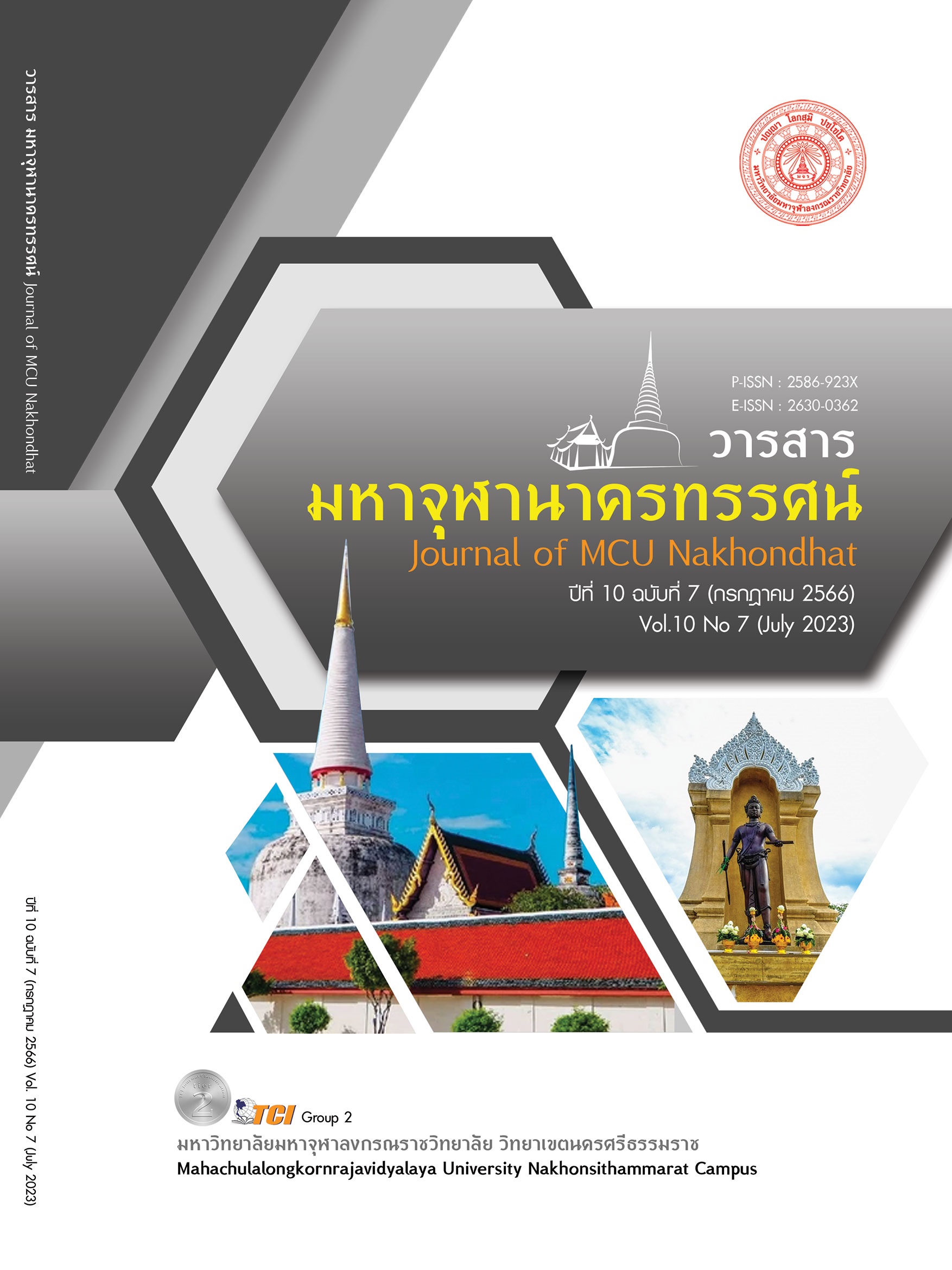MODEL-BASED LEARNING ACTIVITIES TO DEVELOP MISCONCEPTIONS OF GRADE 11TH STUDENTS IN BIOLOGY
Main Article Content
Abstract
The objectives of this research article were to 1) to study the efficiency of the package with the 80/80 efficiency index on reproduction of flowering plants and transport of plants in grade 11th students using model-based learning activities. 2) compare the mean scores of scientific conceptual understanding and 3) study scientific conceptual understanding after using model-based learning activities. It was quantitative research. The research participants were 41 students in grade 11th who were studying in the Laboratory School of Phranakhon Si Ayutthaya Rajabhat University. This study was a pre-experimental design using one group pretest-posttest design. Research instruments included eight teaching plans of reproduction in flowering plants and transport of plants for 24 periods and the students’ scientific conceptual test, a two-tier diagnostic concept test using 30 items (reliability at 0.83). The finding research found that 1) the efficiency of model-based learning activities was 84.81/81.37 is by hypothesis. 2) Comparison scores for comprehension of scientific concepts Before the activity, students had an average understanding of science equal to 51.85 and after the activity, students had an average understanding of science equal to 97.37. When compared, the average score after the activity was significantly higher than before the activity at the 0.05 level. 3) Misunderstandings of grade 11th students in Biology about the reproduction of flowering plants and plant transport. After organizing learning activities using a model as a base Students have a more accurate understanding of science. and have decreased scientific understanding.
Article Details

This work is licensed under a Creative Commons Attribution-NonCommercial-NoDerivatives 4.0 International License.
References
กฤษณา โภคพันธ์. (2554). การพัฒนาแนวคิด เรื่องดาราศาสตร์และอวกาศ และเจตคติทางวิทยาศาสตร์ของนักเรียนระดับชั้นมัธยมศึกษาปีที่ 5 ด้วยกิจกรรมการเรียนรู้ โดยใช้แบบจำลองเป็นฐาน. ใน วิทยานิพนธ์ปริญญาศึกษาศาสตรมหาบัณฑิต สาขาวิชาวิทยาศาสตร์ศึกษา. มหาวิทยาลัยเกษตรศาสตร์.
ละมัย โชคชัยและคณะ. (2557). การพัฒนาแนวคิดเรื่องเซลล์ของนักเรียนระดับชั้นมัธยมศึกษาปีที่ 1 ด้วยกิจกรรมการเรียนรู้โดยใช้แบบจำลองเป็นฐาน. ใน วิทยานิพนธ์ปริญญาศึกษาศาสตรมหาบัณฑิต สาขาศึกษาศาสตร์. มหาวิทยาลัยเกษตรศาสตร์.
ศิริพรรณ ศรีวรรณวงษ์. (2553). ความเข้าใจมโนมติวิทยาศาสตร์ เรื่องการถ่ายทอดลักษณะทางพันธุกรรมของนักเรียนชั้นมัธยมศึกษาปีที่ 6 เมื่อใช้ยุทธศาสตร์การสอนเพื่อเปลี่ยนมโนมติ. ใน วิทยานิพนธ์ปริญญาศึกษาศาสตรมหาบัณฑิต สาขาวิชาวิทยาศาสตร์ศึกษา. มหาวิทยาลัยขอนแก่น.
สํานักงานคณะกรรมการการศึกษาขั้นพื้นฐาน. (2560). มาตรฐานการเรียนรู้และตัวชี้วัด กลุ่มสาระการเรียนรู้คณิตศาสตร์ วิทยาศาสตร์ และสาระภูมิศาสตร์ (ฉบับปรับปรุง พ.ศ. 2560) ตามหลักสูตรแกนกลางการศึกษาขั้นพื้นฐาน พุทธศักราช 2551. กรุงเทพมหานคร: โรงพิมพ์ชุมนุมสหกรณ์การเกษตรแห่งประเทศไทย.
Bao, L. et al. (2009). Learning and scientific reasoning. Education forum 323. Retrieved January 30, 2009, from http://www.physics.ohio state.edu/~lbao/Papers/BaoLearning-Scientific-Reasoning.pdf
Calik, M. et al. (2009). Investigating the effectiveness of an anlogy activity in improving students’ conceptual solution chemistry concepts. International Journal of Science and Mathematics Education, 7(4), 651-676.
Gilbert, J.K. et al. (2000). Developing Models in Science Education. Springer Book: Springer Dordrecht.
Gobert, J.D. & B.C. Buckley. (2002). Introduction to model-based teaching and learning in science education. International Journal of Science Education, 22(9), 891-894.
Harrison, G.A. & Treagust, D.F. (2000). typology of school science models. International Journal of Science Education, 22(9), 1011- 1026.
Ross, P.A. et al . (2005). Modelling Photosynthesis to Increase Conceptual Understanding. International Journal of Science Education, 40(2), 80-88.


